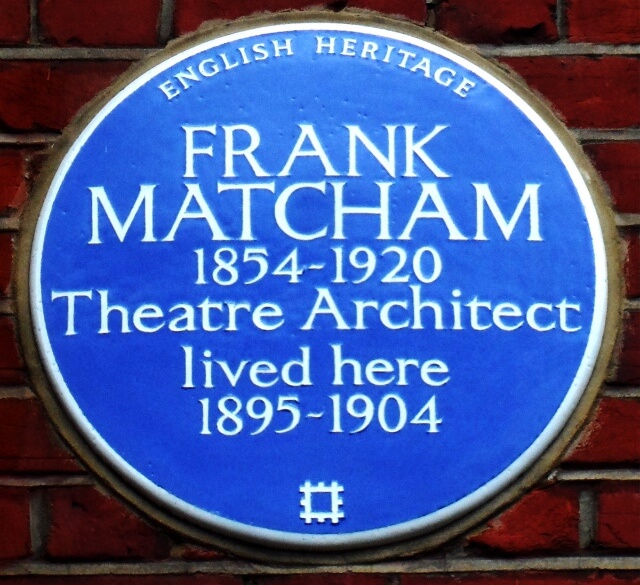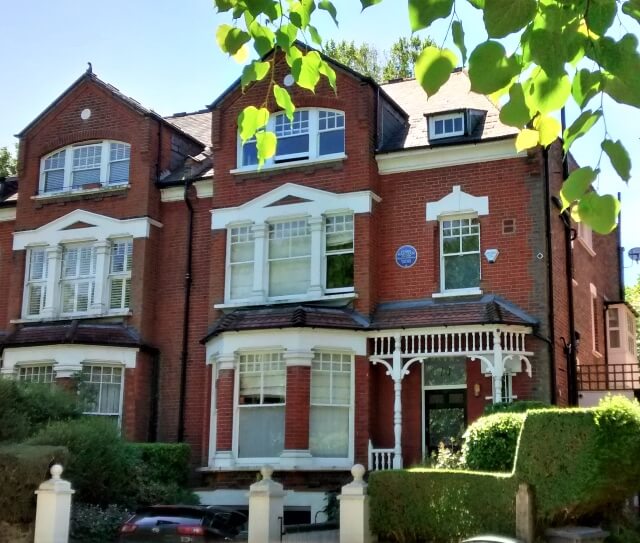
Sunday, 17th May, was the centenary of Frank Matcham’s death, probably the most creative theatre architect the UK has produced. He was responsible for designing 150 spectacular buildings all over the country, of which 26 survive. For nine years, between 1895 and 1904, he lived at 10 Hazelmere Road, Crouch End. In November 2007, actors Timothy West and Prunella Scales unveiled an English Heritage Blue Plaque to Matcham on the house.

Frank Matcham was an unlikely architect of flamboyant buildings. Born one of nine children in 1854 in Newton Abbot Devon, his father Charles was a brewer. He was apprenticed at 14 to a Torquay architect and moved to London in 1875. He joined the practice of Jethro T Robinson who was consulting architect to the Lord Chamberlain. Matcham went on to marry his boss’s daughter and he took over the practice when Robinson died in 1878.
Magnificent buildings
His most successful period was 1892 to 1912 when his output was prodigious. His main client was Moss Empires, a theatrical company headed by Edward Moss and run by Oswald Stoll. Theatres and music halls were not his only creations but other magnificent buildings also such as Blackpool Tower Circus and Leeds’ County Arcade. He turned people’s fantasies into bricks and mortar.
His buildings were impressive in size with ornate baroque and oriental exteriors and auditoriums with spectacular ceilings, palace-like lighting, plush curtains and seats and exuberant decorations transporting the audience into another world for a few hours. Yet his theatres were practical, providing a good view from every seat in the auditorium and excellent acoustics. These were theatres which welcomed the audience, drew them in and made them feel comfy.
Exuberant style
Other architects of his time and for 50 years after his death were hostile to his exuberant style and demolition (and bombing in the war) put an end to many of his creations. Frank Matcham died at his seaside home in Essex in 1920 of blood poisoning after cutting his finger nails. He was laid to rest in the Eastern section of Highgate Cemetery where a plain cross marks his grave and that of his wife Hannah who predeceased him by only a few months.
Some of Marcham’s theatres: The London Coliseum, The London Palladium, The Lyric Hammersmith, The Hackney Empire, The Theatre Royal Stratford East, The Opera House Buxton, Derbyshire, The Grand Opera House Belfast, The Bristol Old Vic, The Empire Theatre Sheffield.
Image credits
Street view of 10 Hazelmere Road – Janet Owen; Blue Plaque – Spudgun67/Creative Commons